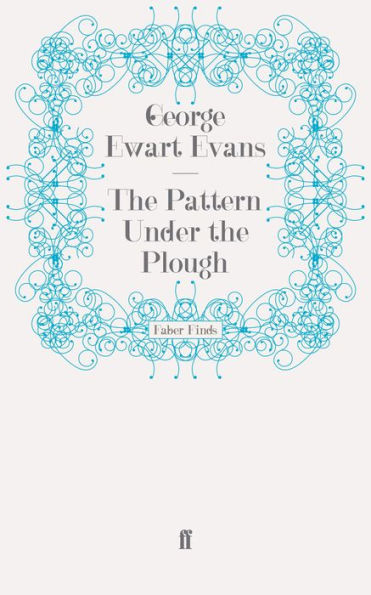Following his two classics, Ask the Fellows Who Cut the Hay and The Horse in the Furrow, renowned oral historian George Ewart Evans continues his study of the vanishing customs, working habits and rich language of the farming communities of East Anglia with The Pattern Under the Plough (Faber, 1966). Although based on East Anglia, this book was and remains of wider interest, for - as the author pointed out at the time - similar changes were occurring in North America, and also happening with remarkable speed in Africa.
In chronicling the old culture George Ewart Evans has taken its two chief aspects, the home and the farm. He describes the house with its fascinating constructional details, the magic invoked for its protection, the mystique of the hearth, the link of the bees with the people of the house, and some of their fears and pre-occupations. Among the chapters on the farm is one of Evans's most original pieces of research: the description of the secret horse societies. Beautifully illustrated by David Gentleman, this book is important not only for the material it reveals about the past but for the implications for present-day society.
'As real (and as valuable) as the evidence unearthed by the spadework of archaeology.' Observer
Following his two classics, Ask the Fellows Who Cut the Hay and The Horse in the Furrow, renowned oral historian George Ewart Evans continues his study of the vanishing customs, working habits and rich language of the farming communities of East Anglia with The Pattern Under the Plough (Faber, 1966). Although based on East Anglia, this book was and remains of wider interest, for - as the author pointed out at the time - similar changes were occurring in North America, and also happening with remarkable speed in Africa.
In chronicling the old culture George Ewart Evans has taken its two chief aspects, the home and the farm. He describes the house with its fascinating constructional details, the magic invoked for its protection, the mystique of the hearth, the link of the bees with the people of the house, and some of their fears and pre-occupations. Among the chapters on the farm is one of Evans's most original pieces of research: the description of the secret horse societies. Beautifully illustrated by David Gentleman, this book is important not only for the material it reveals about the past but for the implications for present-day society.
'As real (and as valuable) as the evidence unearthed by the spadework of archaeology.' Observer

The Pattern Under the Plough
270
The Pattern Under the Plough
270Related collections and offers

Product Details
| ISBN-13: | 9780571286874 |
|---|---|
| Publisher: | Faber and Faber |
| Publication date: | 11/15/2012 |
| Sold by: | Bookwire |
| Format: | eBook |
| Pages: | 270 |
| File size: | 6 MB |
